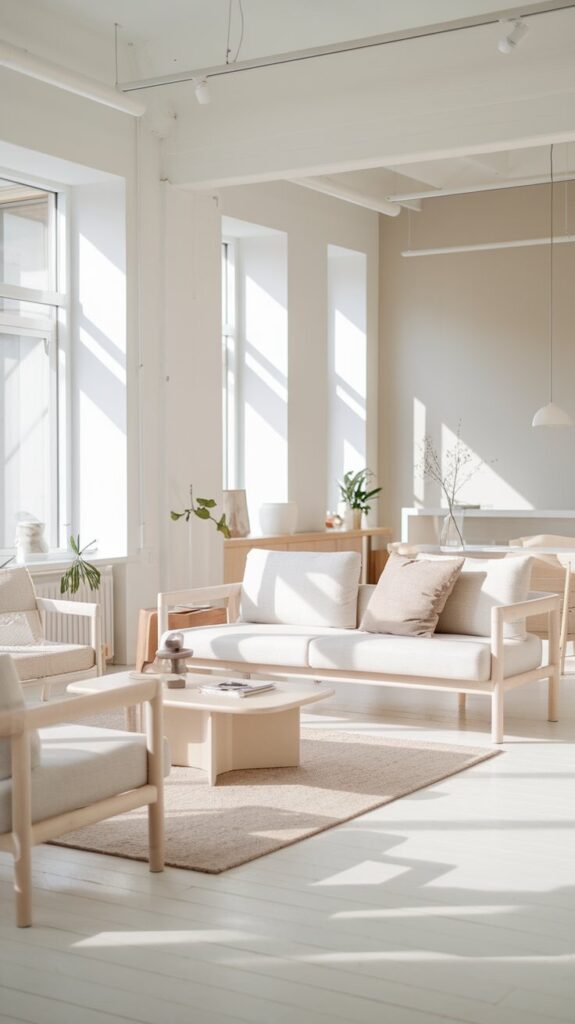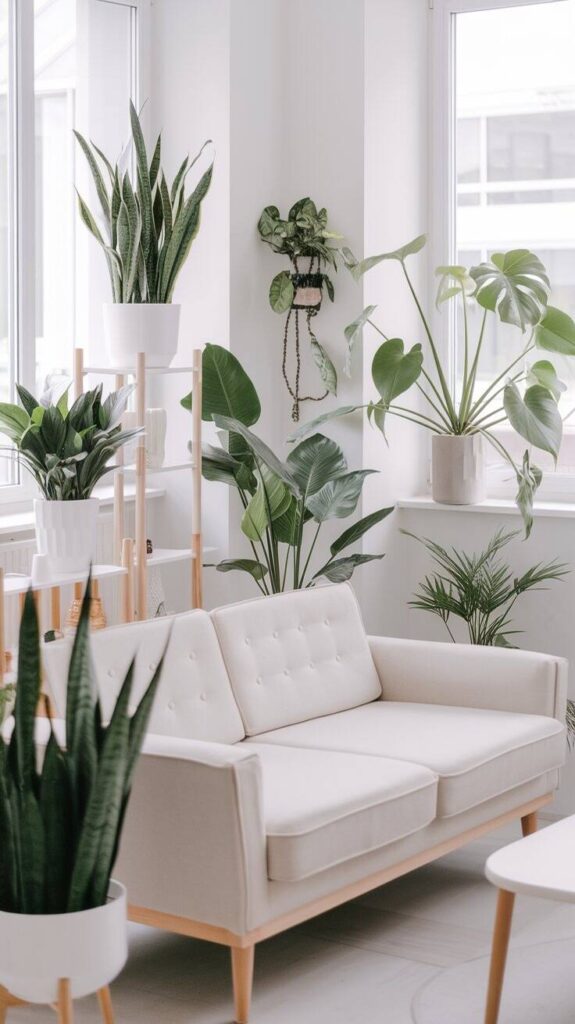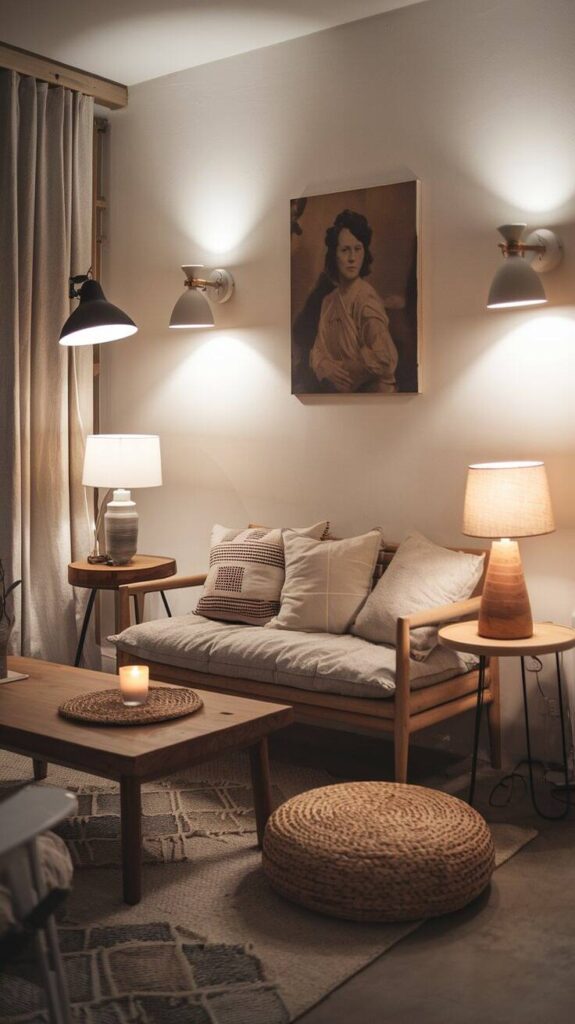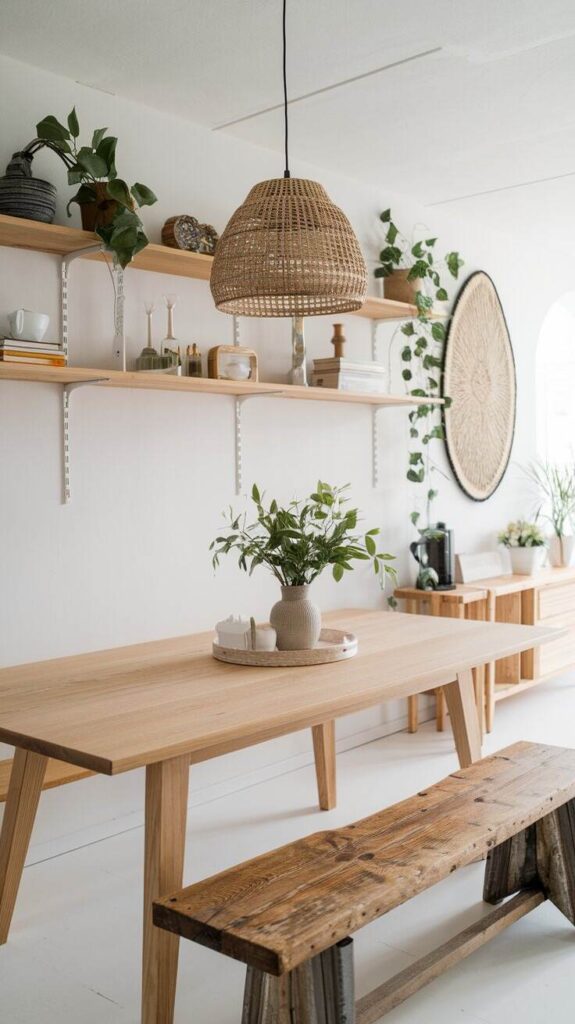Scandinavian interiors are the epitome of coziness, simplicity, and functionality. Inspired by the Nordic lifestyle, these spaces focus on creating a calming atmosphere filled with natural light, minimalist decor, and warm textures. If you’re looking to revamp your home with a modern, yet inviting feel, Scandinavian interiors are a perfect choice.
From clean lines to cozy accents, Scandinavian interior design combines simplicity with comfort. Whether you’re decorating a small apartment or a spacious living room, this style prioritizes functionality and a clutter-free environment while still feeling homey and welcoming.
1. Embrace Minimalism

Minimalism is at the heart of Scandinavian interior design, focusing on clean lines, uncluttered spaces, and essential decor. The key to this style is simplicity, choosing only functional and meaningful items. Opt for sleek furniture pieces with straight lines and avoid over-decorating the room.
A minimalist Scandinavian space feels open and airy, creating a peaceful environment that helps you unwind. Use neutral colors like white, beige, and soft grays to keep the palette calming and consistent. Add warmth with natural textures like wood, wool, or linen, bringing coziness without overwhelming the space.
By embracing minimalism, you allow each piece in your home to shine while creating a harmonious and balanced look. It’s a perfect way to make even a small room feel more spacious and inviting.
2. Incorporate Natural Light
Scandinavian interiors are all about maximizing natural light, which is a crucial element in Nordic design due to the long, dark winters in the region. Large windows, sheer curtains, and light-colored walls help to reflect and amplify sunlight, making the space feel bright and open.
Consider using mirrors strategically to reflect light and create the illusion of a bigger room. Opt for window treatments like sheer, white curtains that allow sunlight to filter through while maintaining privacy. Light wood floors and white walls are typical features that help bounce light throughout the space.
3. Add Cozy Textures

Texture is key to creating a warm and inviting Scandinavian interior. Since the color palette is often neutral, adding a variety of textures can prevent the space from feeling flat or cold. Think plush throws, chunky knit blankets, and fluffy pillows that add depth and softness to your home.
Incorporate natural materials like wool, sheepskin, and linen for a cozy, tactile experience. Layering these textures on sofas, beds, and chairs instantly makes the space feel more comfortable and lived-in. A textured area rug can also anchor the room and add warmth, especially in colder months.
By mixing different textures, you bring a sense of hygge, the Danish concept of coziness, into your home. It’s all about creating a space that feels comforting and inviting, perfect for relaxing and unwinding.
4. Focus on Functional Furniture
In Scandinavian interiors, every piece of furniture should serve a purpose. Functionality is as important as style, with a focus on sleek, practical designs that enhance the usability of the space. Choose furniture that offers both comfort and storage, like a sofa with a hidden compartment or a coffee table with shelves.
Opt for pieces made from natural materials, such as light woods, leather, or metal, which fit seamlessly into the minimalist aesthetic. Scandinavian furniture often features clean lines, tapered legs, and a lightweight design, making it easy to move and rearrange as needed.
5. Greenery

Bringing nature indoors is a key aspect of Scandinavian interior design. Adding plants and greenery not only livens up the space but also connects it with the outdoors, creating a fresh and airy atmosphere. Choose low-maintenance plants like snake plants, monstera, or peace lilies that thrive in indoor environments.
Place potted plants on shelves, window sills, or the floor in stylish planters to add a pop of color against the neutral palette. Greenery helps purify the air and can boost your mood, making your home feel more vibrant and lively.
Incorporating plants is an easy way to soften the look of a minimalist space and add a touch of nature, which is a staple in Nordic design. It’s a simple, affordable way to make your home feel more inviting and cozy.
6. Use Neutral Tones
The Scandinavian color palette is known for its simplicity and lightness. Neutral tones like white, gray, and beige dominate the space, creating a clean, serene environment. These colors help reflect natural light and make the room appear larger, which is especially beneficial in smaller spaces.
To prevent the space from feeling too cold, incorporate warm undertones and natural textures. Light wood finishes, soft fabrics, and subtle accent colors like dusty pink or muted blue can add warmth and personality to the room without disrupting the calm, neutral base.
7. Layer Lighting for Warmth

Lighting is a crucial element in creating a cozy Scandinavian interior. Instead of relying on a single overhead light, use a combination of different light sources to add warmth and depth. Incorporate table lamps, floor lamps, and wall sconces with soft, diffused lighting to create a welcoming ambiance.
Opt for fixtures with a minimalist design, featuring natural materials like wood or metal. Candles are also a staple in Nordic homes, adding a warm, flickering glow that enhances the cozy atmosphere, especially in the evening.
Layering different types of lighting helps set the mood and adds a sense of comfort to your space. It’s an easy way to create a warm, inviting environment, perfect for relaxing with family and friends.
8. Display Simple Artwork
Scandinavian interiors often feature simple, understated artwork that complements the minimalist aesthetic. Choose pieces with clean lines, neutral colors, or abstract designs that add visual interest without overwhelming the space. Black and white photography, line drawings, or simple prints are popular choices.
Create a gallery wall with a few carefully selected pieces, or opt for a single, large statement piece that serves as a focal point. Keep the frames simple, using wood or metal to match the decor style of your room.
9. Wooden Accents

Wood is a staple in Scandinavian design, adding warmth and natural beauty to any room. Light-colored woods like birch, pine, and oak are commonly used for furniture, flooring, and accents. Wooden elements help soften the minimalist look and bring an organic, earthy feel to the space.
Incorporate wooden items like a dining table, shelving units, or coffee tables to add texture and warmth. Even small touches, like wooden picture frames or cutting boards, can enhance the cozy, natural vibe of your home.
Wooden accents create a sense of connection with nature, a key component of Scandinavian interiors. It’s about bringing the beauty of the outdoors inside, creating a harmonious and inviting environment.
10. Create a Cozy Reading Nook
No Scandinavian home is complete without a cozy corner to relax and unwind. Create a reading nook by placing a comfortable chair or sofa near a window, paired with a soft throw blanket and a few cushions. Add a small side table for your favorite book or a cup of tea.
Choose a chair with a sleek, minimalist design, and layer it with textures like a sheepskin throw or knit pillow for added comfort. Incorporate a floor lamp or table lamp with warm lighting to complete the cozy setup.
